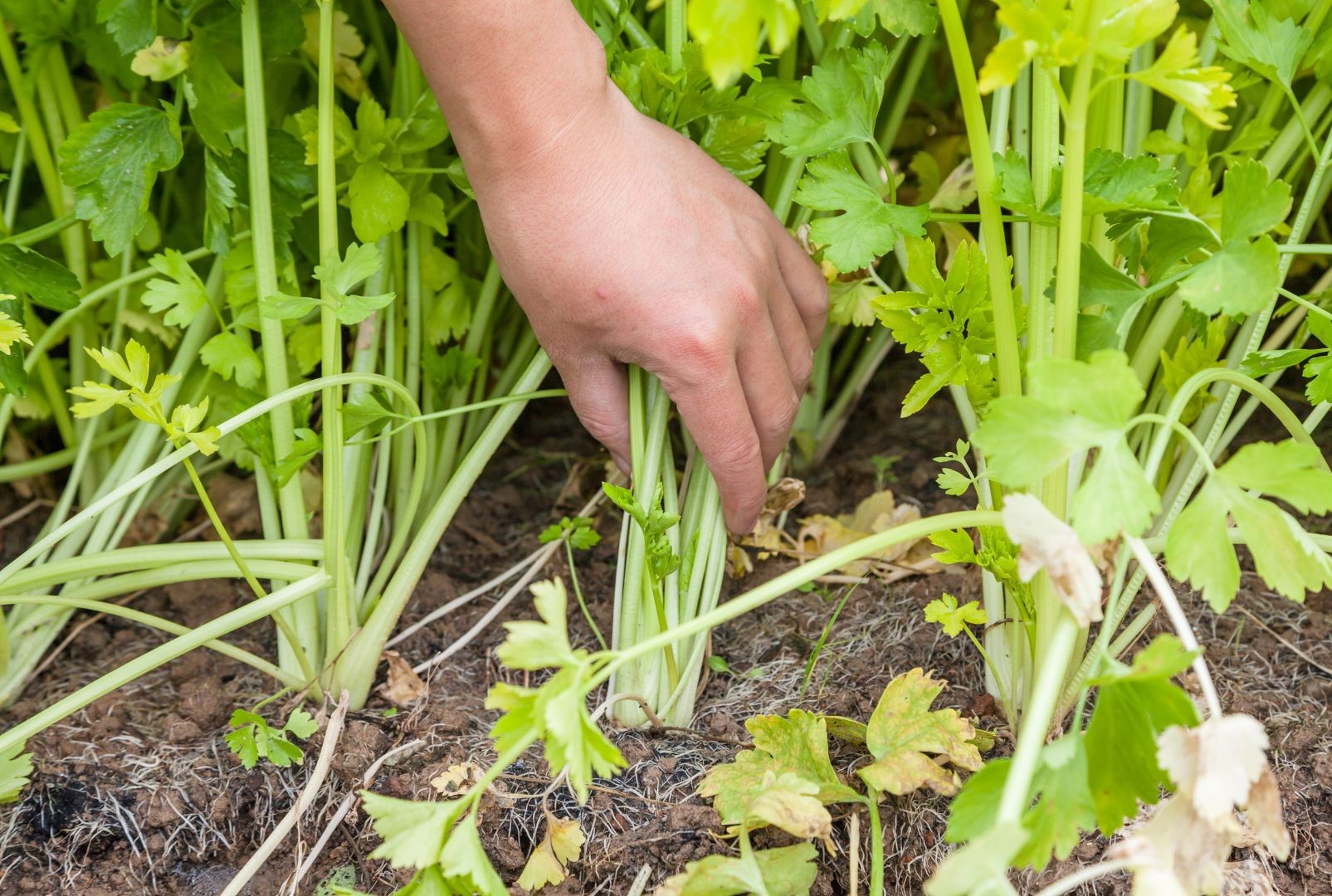Celery Stalk Blanching – How to Blanch your Celery

This post is also available in:
This post is also available in:
![]() Deutsch (German)
Deutsch (German) ![]() हिन्दी (Hindi)
हिन्दी (Hindi) ![]() Ελληνικά (Greek)
Ελληνικά (Greek)
Note: the following information is for Apium graveolens var. graveolens (Celery).
Blanching aims to produce pale (white-greenish) stalks that are sweeter in taste and more tender. Blaching is usually necessary (market demand) when the celery is sold for raw consumption. Stalk bleaching can be achieved via multiple procedures, but the following 3 are the most commonly applied by professional celery growers:
- To reduce the labor, many farmers prefer to plant their celeries at closer distances (20-23 cm or 9 inches apart). This way, the plants have less space to grow, the stalks stay closer together (less lateral growth), and are shaded from each other.
- Around 20 days before harvest, growers cover the stalks with soil to cut off their direct exposure to sunlight. Some farmers start earthing up quite earlier (2 months after planting or when the plants have reached a height of 30 cm) and repeat it weekly or once every 3 weeks until reaching the base of the leaves.
- Many conventional (non-organic) professional farmers prefer to use ethylene hormone before harvesting.
However, nowadays, there are numerous self-blanching celery varieties available in the market, such as Apium graveolens var. dulce ‘Golden Self-blanching.’ These self-blanching varieties can be planted at ground level, and thanks to self-shading, the plants will blanch themselves.
Further reading
Interesting Facts, Nutritional Value and Plant Information of Celery
How to Grow Celery in a Pot in your garden
Growing Celery for Profit – Commercial Celery Farming
Celery Soil preparation, Soil requirements, and Seeding requirements
Celery Water Requirements – How to irrigate Celery
Celery Fertilizer Requirements
Celery Stalk Blanching – How to Blanch your Celery









































































